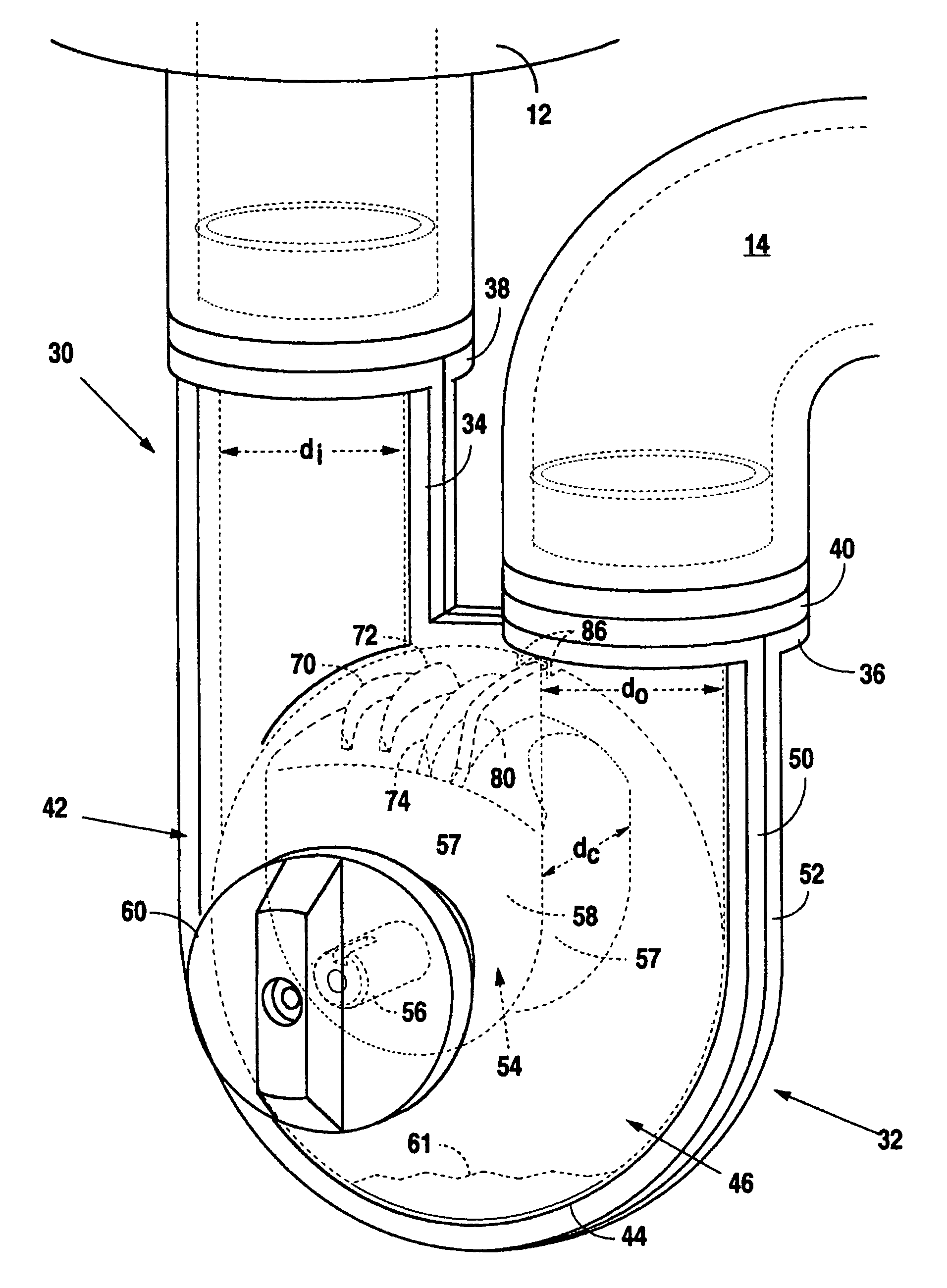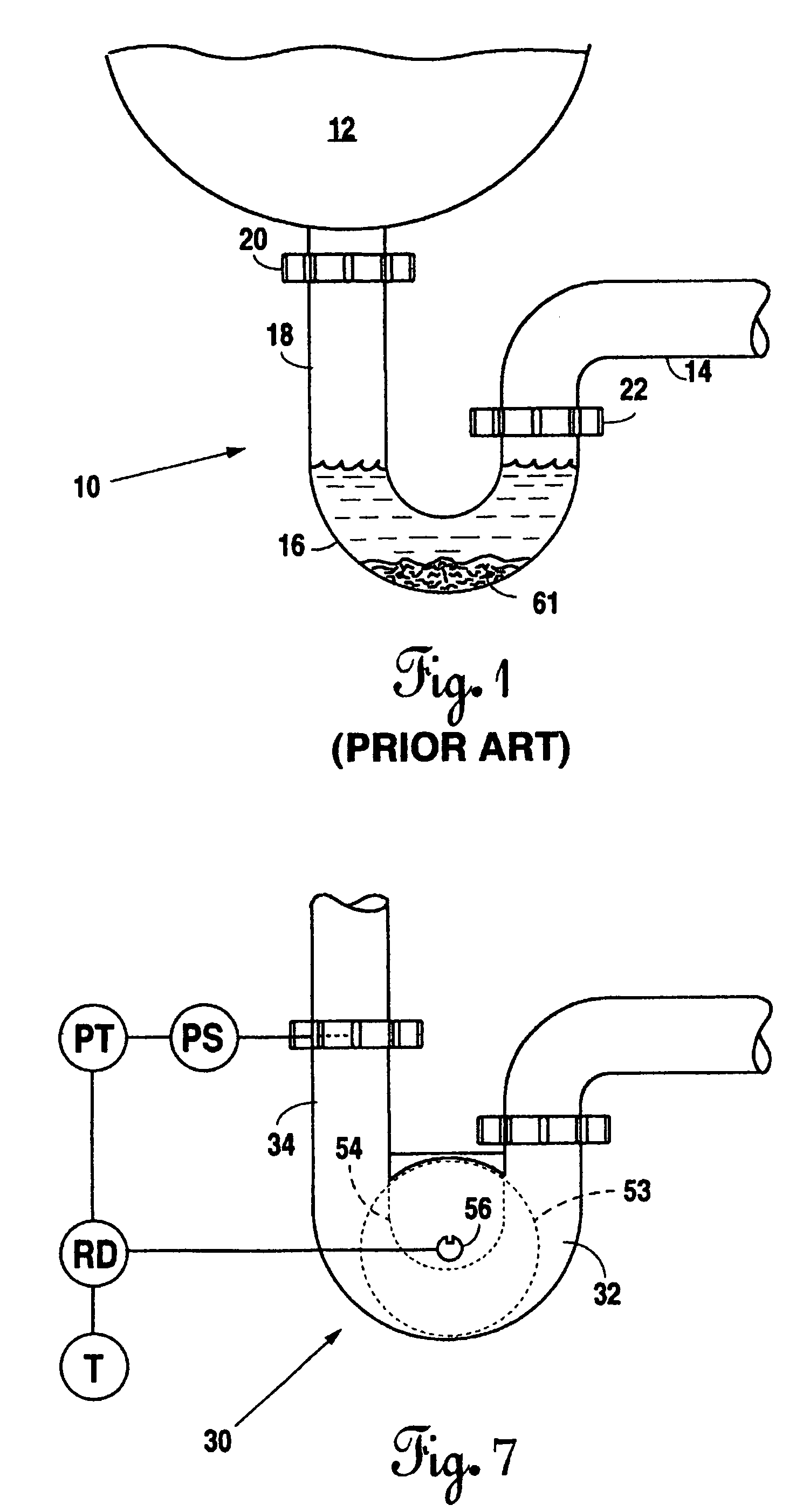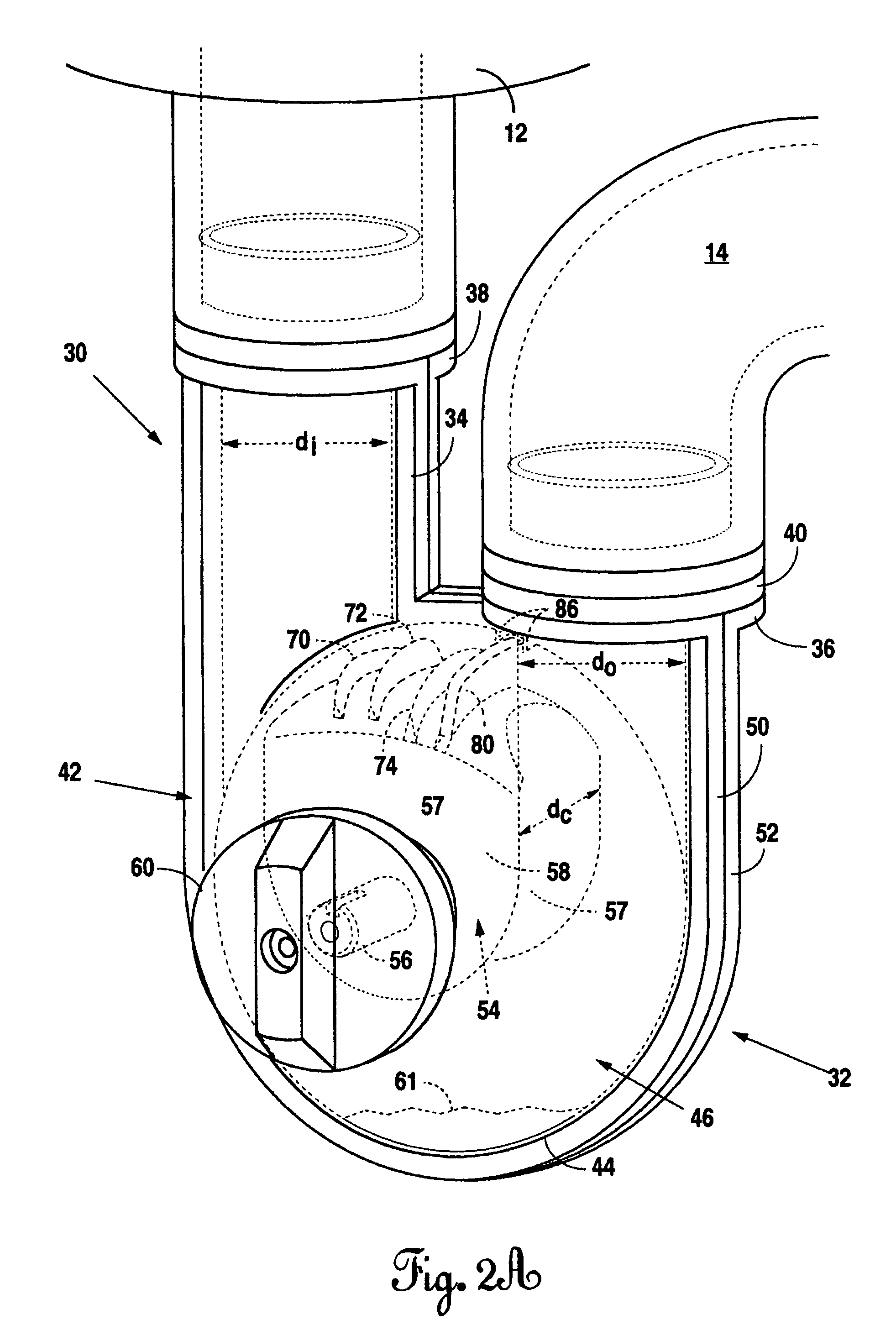Method and apparatus for cleaning a conduit
- Summary
- Abstract
- Description
- Claims
- Application Information
AI Technical Summary
Problems solved by technology
Method used
Image
Examples
Embodiment Construction
[0025]FIG. 1 illustrates a typical drain trap 10 attached to a sink 12 and a drain line 14. The J-trap 10 catches objects, such as rings, jewelry, tools, or other precious items, which fall into the sink drain and prevents gases in the sewer system from backing up through the drain line and entering the environment around the sink. The J-trap has a bight portion 16 which bends or curves and allows liquid to collect in the trap preventing gases from traveling from the drain line 14 and up through the inlet leg 18 of the trap. However, build-ups of sludge accumulate in the bottom of the bight portion and reduce the flow of liquids through the trap. In some cases, the build-ups completely block the flow.
[0026]Normally, in conventional J-traps, connecting unions 20 and 22 are loosened and the trap removed from the drain line for cleaning. This, however, results in having to take the drain “off line,” thereby exposing the environment to the back flow gases in the sewage system and downti...
PUM
 Login to View More
Login to View More Abstract
Description
Claims
Application Information
 Login to View More
Login to View More - R&D Engineer
- R&D Manager
- IP Professional
- Industry Leading Data Capabilities
- Powerful AI technology
- Patent DNA Extraction
Browse by: Latest US Patents, China's latest patents, Technical Efficacy Thesaurus, Application Domain, Technology Topic, Popular Technical Reports.
© 2024 PatSnap. All rights reserved.Legal|Privacy policy|Modern Slavery Act Transparency Statement|Sitemap|About US| Contact US: help@patsnap.com










